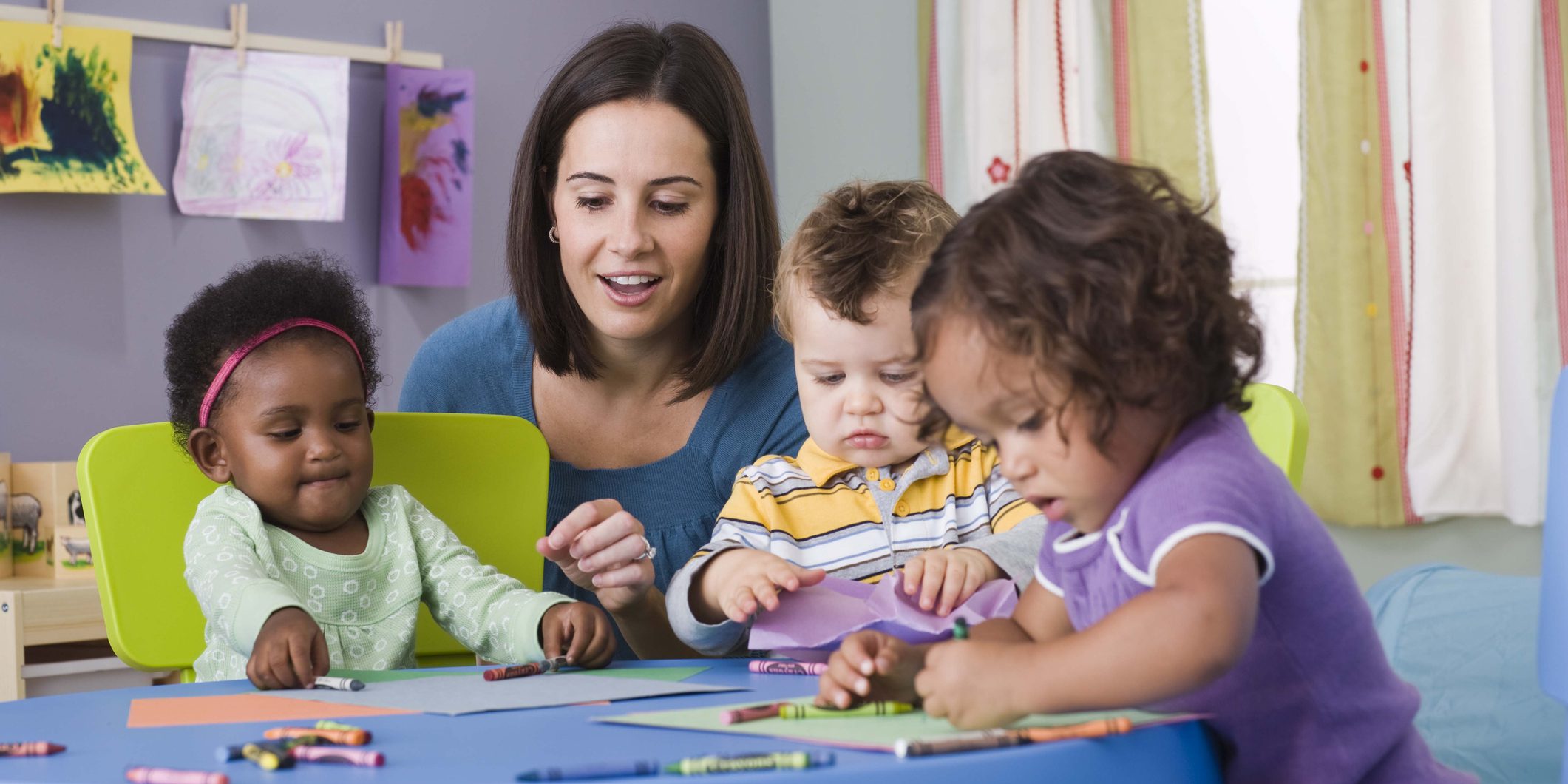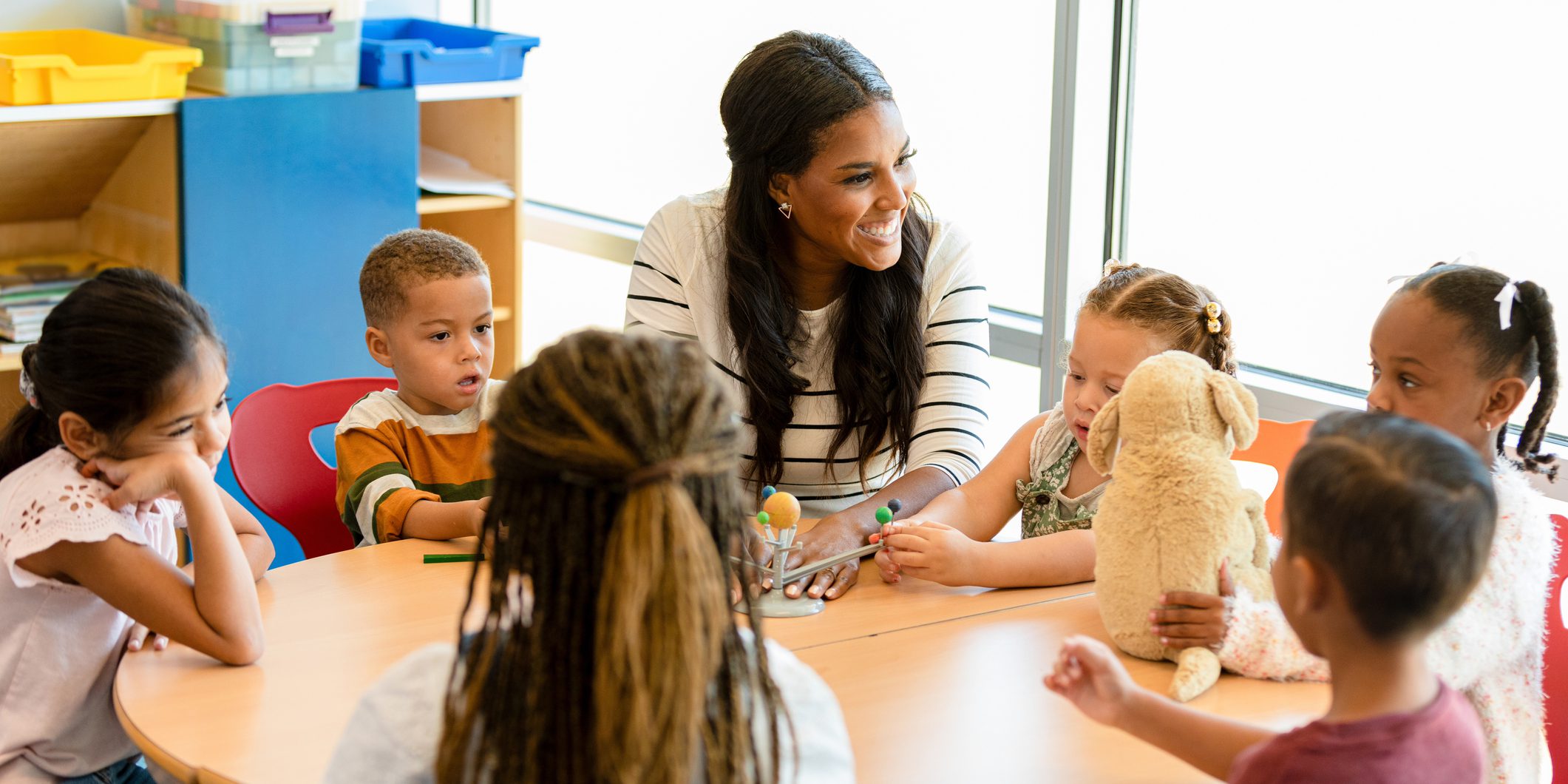This measure refers to how a teacher models or encourages emotional expression. This includes encouraging children to express feelings, labeling feelings, thinking aloud to model their own feelings and reactions. Helping children make connections between their actions and emotional reactions also helps support children’s regulation. This measure focuses on how consistently the teacher helps label children’s feelings and how many intentional activities the teacher does to help children build their emotional awareness or understanding. Examples of intentional activities can include reading books about feelings and using puppets or role play to act out emotional scenarios.
Category: Category 2: Teacher-Child Interactions
Subcategory: Support for Children’s Regulation
Examples
In this section you will find videos, images, and/or documents that can be used to better understand this measure. These examples can also be used in conversations between mentors, directors, and/or teachers to discuss how the program's current practices compare to these examples.
Video Example
This exemplar video depicts an infant teacher labeling the feelings of a baby waiting for his bottle. In this video, you will notice how the teacher labels the infant’s feeling to describe his emotions in the moment.
Age(s): Infant
Video Example
This exemplar video shows how to discuss feelings with toddlers in a small group setting. Using visual aids and songs support children in learning the foundational skills to identity their feelings.
Age(s): Toddler
Video Example
This video shows teachers modeling and encouraging children of multiple age groups to understand their feelings. Helping children make connections between their actions and emotional reactions is one of the ways teachers help support children’s regulation.
Age(s): Toddler, Preschool, School-age
Video Example
There are many books available that explore preschoolers’ expression of feelings. Shared book reading is a wonderful activity to promote children’s understanding of different emotions. In this video exemplar watch as the teacher reads about different emotions and supports the children’s understanding of emotional expression by providing examples and modeling and describing emotions in the book.
Age(s): Toddler
Video Example
This video shows a teacher interacting child who is upset by a consequence given during small group. The teacher in the video labels his feelings during their conversation to get him to participate in the activity.
Age(s): Preschool
Video Example
This video shows a teacher working with a small group of children to discuss what emotions are and the expressions that are associated with feelings.
Age(s): Preschool
Video Example
This video shows a teacher reading a story to a group of children. The teacher takes the opportunity to talk about the character’s feelings and discusses appropriate behaviors to ensure that all children pick up on the feelings presented in the story
Age(s): Preschool
Video Example
In this video you will see a teacher observing infant children during play time to label feelings and connect those feelings to what the child is doing. The teacher also asks the young children open ended questions to encourage them to express themselves and responds to the child’s cues.
Age(s): Infant
Video Example
This video shows one of the ways a teacher can encourage children to talk about and express feelings. In this clip, you will see a teacher point out how characters in a book feel to encourage and extend discussion about feelings with children during story time.
Age(s): Toddler
Practice Opportunities
These resources include tips, strategies, activities, or specific tools related to this measure that programs can put into practice.
Activity
Through a read-aloud, children learn how to name their and others’ feelings. Practitioners can stop during reading to encourage children to act out feelings or make connections between the book and their lives. Modeling and encouraging children to express their feelings supports their emotional development.
Age(s): Toddler
Activity
Children will sing a song about feelings and imitate the facial expressions of each one. While singing, teachers use puppets to build children’s understanding of their own and others’ feelings. This is an intentional activity that supports children’s emotional awareness.
Age(s): Toddler
Activity
In this activity, children will identify feelings by recognizing nonverbal cues. The teacher uses picture cards and models to show what feelings look like. Intentional activities that invite children to label feelings and act them out build their emotional awareness and understanding.
Age(s): Preschool, School-age
Activity
It is important to teach children words to use to express feelings in replace of the use of challenging behavior. The feeling wheel can be used in a variety of ways to help children learn social emotional skills around use of emotional literacy and vocabulary.
Age(s): Toddler, Preschool
Publication
Children are learning to manage their feelings and behavior. They are learning the words to express their feelings and how to show feelings in appropriate ways. In this resource you will find some ways you can help them to be successful as they learn these important skills.
Age(s): Infant, Toddler, Preschool
Activity
Toddlers have strong feelings and often they are not able to manage them on their own. This article shares a few ideas on how to offer toddlers positive guidance that helps them build both self-control and language.
Age(s): Toddler
Publication
Early childhood teachers and providers play an important role in nurturing children’s social and emotional development. Critical to providing support is having realistic expectations of children’s development at different ages. Allowing and encouraging children to express their feelings — both positive and negative — can support their emotional development.
Age(s): Infant, Toddler, Preschool
Publication
Have you ever had a friend move away? Have you had a pet die? Have you lost someone close to you? Sad times are part of life, just as much as happy times. This article shares some ideas for working with children who are going through some sad times.
Age(s): Toddler, Preschool, School-age
Publication
Children need to learn that everyone feels angry sometimes, but hitting, kicking, or biting someone when they are angry is not okay. This article shares some ideas and strategies for working with angry children and supporting them through their feelings.
Age(s): Preschool, School-age







